Q&A – Ask Neil: November 23, 2023
(Please read these instructions carefully.)
Before you post your question, please look at recent issues to see if someone else has already asked it. You might find your answer there.
How to submit your question…
(Note: You may need to allow a pop-up window to come up in order to get the link for sending your photo(s). If you have already submitted your question and didn’t see the pop-up window, please click here.)
• Click the link provided below to post your question. After you submit your question, a new window will pop up giving you the address to which you can e-mail a SHARP, HIGH-RESOLUTION PHOTO to accompany your question. Please DO NOT SEND THUMBNAIL PHOTOS in case I need to zoom in to see things.
• Click here to post your question.
• Please ONLY POST YOUR QUESTION ONE TIME. We can only accept a set number of questions each week, and when we get duplicates it costs other people their chances.
• One question per reader, please.
• Please use this only for posting questions – not for standard emails.
• Watch for your answer in the following week’s e-gardens.
• I choose those of greatest general interest. For example, plant IDs seldom make the cut.
• I must have your first name or initials.
• I must have your city or county. (Texas is a very large state.)
QUESTION 1
SHOULD WE NOT SHRED LEAVES AND LEAVE THEM ON TOP OF THE LAWN?
Question: In your latest e-gardens you stated, “Mow lawn to remove fallen tree leaves. Don’t allow them to collect on top of the grass where they can lead to fungal diseases.” Are you saying not to shred the leaves and leave them on the lawn? I have a high population of post oaks. Paul A., North Keller.
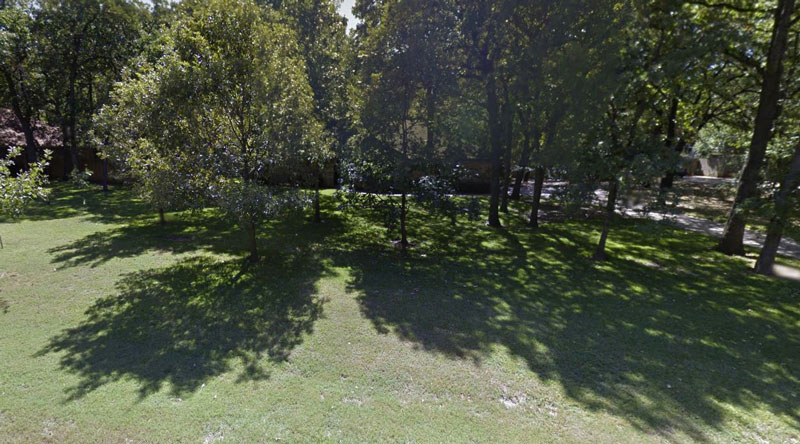
Answer: For a 2-3 week period there are so many leaves that it would introduce too much organic matter back into the soil if we were to mulch them without removing them. And it’s impractical to leave fibrous leaves like post oaks on top of turf. They’re like canvas and they would pack together like shingles on a roof.
My suggestion has always been to bag the clippings for those several weeks and use the shredded leaves either in the compost pile or as a mulch beneath shrubs or in the perennial garden. If it would be easier, you could blow them to an open area of concrete and mulch them there, then pick up the shredded remains.
In your specific case, looking closely at the photo you sent me, it looks very similar to a pecan forest we have across the creek from our sunroom. The shade is so dense that no warm-season grass (St. Augustine, bermuda or zoysia) could possibly survive there through a summer. I sow rye in early October to hold the soil in fall and spring rains. We blow the leaves off the rye and run them through the mower where they can be of benefit to nature, but I don’t leave them where they might damage the new rye plantings.
It looks like the grass in your forested area is brighter green than the rest of your turf. I wondered if it might be rye – if you might have a similar situation to mine.
QUESTION 2
WHAT DOES A HUGE POPULATION OF OAKLEAF GALLS IMPLY FOR NEXT YEAR?
Question: Our neighborhood is inundated with oakleaf galls. I have never seen so many. What does this imply for next year? Marvin T., Keller.
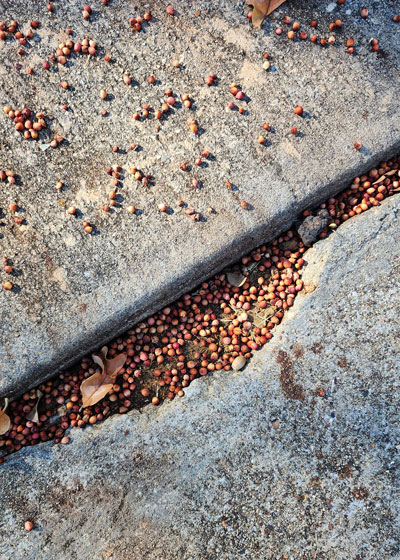
Answer: It doesn’t imply anything. They are caused by insects that sting the plant tissues as they are depositing their eggs. The galls are plant tissues produced in response to the stings. As to next year, you have probably noticed the rises and falls of populations of other insects from one year to the next. Think back to grasshoppers, armyworms and other pests that are prolific one year, then not seen for a decade afterwards. You can’t do anything to prevent or cure them anyway, so worrying about them won’t be of any help.
QUESTION 3
WHAT ACIDIFIER SHOULD WE BUY FOR EAGLESTON HOLLIES?
Question: We had 30-gallon Eagleston hollies and Little Gem southern magnolias planted last spring. We were told to add acidifier to the soil on occasion. What should we buy, and when and how often should we apply it? Cathy C., Waco.
Answer: Your local nursery, hardware store or feed store will sell a sulfur soil acidifier product that will be your best option. There are several brands on the market. Some also contain iron which you will probably need to add. Plants need the iron in the production of chlorophyll, and the acidification will keep iron in a soluble (“available”) form. Your Little Gems should be fine, but Eagleston hollies may need more iron than you’ll be able to supply as they mature. To be consistent with other answers I’ve given in the past (and will probably give in the future), it and the other American holly hybrids are not plants that I’m comfortable recommending for landscapes along the I-35 Blackland Prairie corridor. I’m going to direct you back to the people who originally gave you that recommendation. I’m going to let them advise you as to how much and how often you’re going to have to be applying the sulfur. I’m just afraid you’ll have a hard time staying ahead of iron deficiency (chlorosis). If you’re in the Blackland Prairie, your soil will not be their friend.
QUESTION 4
WHAT ARE THESE LITTLE PILES OF SOIL I FIND AROUND MY LAWN?
Question: I have these little piles of soil around the lawn. No one has been able to tell me what is making them. David B., Weatherford.
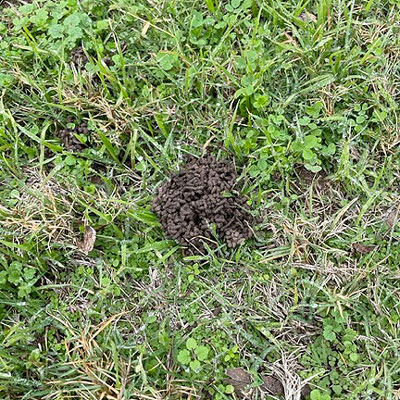
Answer: Those are earthworm castings – soil and manure that have been left behind as earthworms have processed soil in your ground. These are nutrient rich. They will dry and filter back into the soil, carrying the nutrients back into the ground in the process. The earthworms aerate the soil. Rejoice! It’s all a very good thing! (You can even buy earthworm castings.)
QUESTION 5
WHAT HIT MY BERMUDAGRASS?
Question: What happened to my bermudagrass? It was green and lush until two weeks ago. Now it is dying in this strange pattern. I have maintained this lawn for more than 20 years and it has never looked like this. Help! Elizabeth A., Tarrant County.
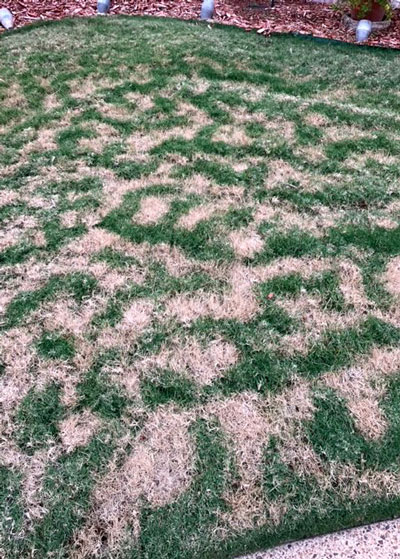
Answer: This is the impact of a killing frost (but not cold enough for a killing freeze – that would have turned it brown over the entire lawn). No cause for concern. It will all even out when the first hard freeze rolls in. In the meantime, just smile and tell the neighbors you have changed out to variegated bermuda for a more exciting look.
QUESTION 6
CAN I PRUNE OUT A BLACK CORE IN THE TOP OF MY PONYTAIL PALM?
Question: I have a ponytail palm that is 29 years old and 8-9 ft. tall. It has formed a dime-sized black center at the very top of the core of the plant. Should I top off the black infected area? Fred F., Tyler.
Answer: Oh, for a photo. If you take the top out of a ponytail it’s going to produce side shoots. That might look really odd. However, if the top has died out, there may not be another option. Next time, please attach a photo so I can give you a better answer.
QUESTION 7
HOW CAN I ADD BEAUTY TO THIS AREA?
Question: I’m 75 years old and my knees are shot. (But I’m motivated!) A lot of trees and shrubs died out in the front of my house, both in the sun and in the shade. The entire area is full of roots where dead trees and shrubs were removed. How can I add some beauty to the area? Linda S., Plano.
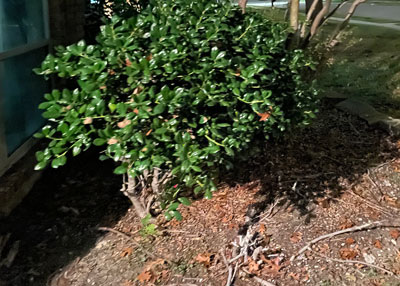
Answer: I don’t know where to begin with my answer. I can only see the one very limited spot in your photo beside a surviving dwarf Burford holly. I don’t know what else is still surviving across the front of your house. It’s possible that starting fresh with new plantings might be the easiest way, even if you had to use smaller specimens to conserve dollars. I just redid some 45-year-old beds in our landscape. They had become rather “tired” looking, and I did exactly that. It’s always amazing how nice a new design can look once you get everything planted, new edging in place and the ground covered in attractive bark mulch.
If you were to hire a few hard-working young people to pull out the old roots at a time when the soil was very moist after deep, soaking rains it wouldn’t be especially difficult. It might be that your church would know of a group of volunteers or scouts who could do it for you.
Stepping it up to a professional level, the people at Calloway’s can do a nice job of redoing the beds for you – or supplementing what you currently have. Take more comprehensive photos into a store some weekday and discuss this with one of their managers or assistant managers. They have a division within the company for this specific purpose, and they have three stores in Plano. The North Plano store on 121 between Independence and Custer is where a lot of their landscaping work is based. (Calloway’s is an advertiser in e-gardens. As a result, I’m familiar with this service. Other retail nurseries offer similar services.)
Without more details and photos of what you have and what you’re hoping to accomplish, those are my suggestions. Good luck with it all!
